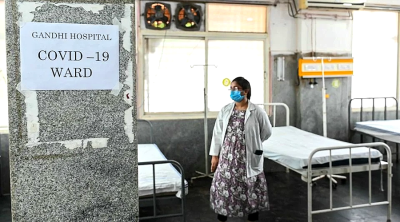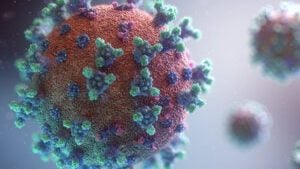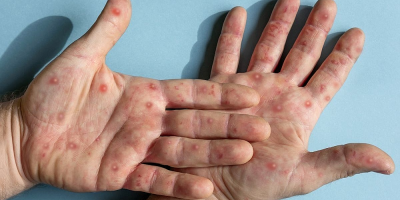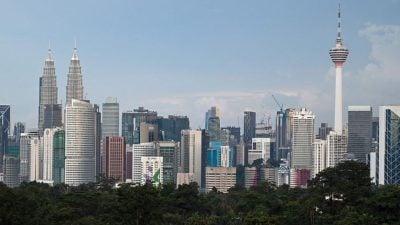As the world deals with various existing and emerging infectious diseases, it’s crucial to distinguish between them to understand their transmission, symptoms, and preventive measures.
Two diseases that recently have made headlines and declared public health emergencies are Mpox (previously known as Monkeypox) and Coronavirus Disease 2019 (Covid-19).
While both causative agents are viruses and can lead to significant health concerns, they are fundamentally different in their origins, symptoms, transmission modes, and treatment.
According to the United States Centre for Disease Control and Prevention (CDC), there are 99,518 Mpox cases globally, with 207 deaths from 1 January 2022.
Meanwhile, the situation in Malaysia shows there are a total of nine cases with no deaths reported.
All Mpox cases were reported last year, and no case has been reported this year.
Covid-19 is more contagious as around 776 million cases have been reported since the beginning, with 7.1 million deaths, according to WHO.
In Malaysia alone, there were a total of 5.4 million cases of Covid-19, with 37,500 deaths.
Why Mpox has been declared PHEIC for second time in two years
Mpox was first declared a public health emergency of international concern (PHEIC) on 23 July 2022, and for a second time on 14 August 2024.
This is due to a significant rise in cases, particularly in the Democratic Republic of the Congo (DRC) and neighbouring countries. Mpox cases have also been reported in countries such as Sweden and Pakistan.
Other reasons include a more transmissible variant, Clade 1b.
Origins and causative agent
Mpox was first identified in laboratory monkeys in 1958, and is caused by the monkeypox virus.
Mpox has two subtypes: Clade 1 and clade 2. Clade 1 Mpox is known for causing more severe disease and is associated with a higher fatality rate.
The new, mutated strain of clade 1 – clade 1b, which appears to be spreading mainly through sexual networks, saw a notable increase in the Democratic Republic of the Congo (DRC) in 2023.
Covid-19, on the other hand, is caused by the Severe Acute Respiratory Syndrome Coronavirus 2 (SARS-CoV-2), a novel coronavirus that emerged in Wuhan, China, in late 2019.
Similar to Mpox, Covid-19 also has other variants such as the Delta, Omicron and others.
Symptoms and clinical presentation
While both diseases present overlapping symptoms, they also have distinct clinical presentations.
The incubation period of Mpox is between 3-17 days, and symptoms start 5-21 days after infection with common symptoms such as fever, headache, sore throat, muscle aches, swollen lymph nodes, and rash with blisters on the face, hands, feet, body, eye, mouth or genitals.
People with Mpox can experience severe complications, such as bacterial skin infections, pneumonia, vision loss, and severe dehydration or malnutrition due to gastrointestinal symptoms.
Other potential complications include sepsis, inflammation of the brain, heart, rectum, genital organs, or urinary passages, and even death.
Those with weakened immune systems are at a higher risk of serious illness and death from Mpox.
On the contrary, the incubation period of Covid-19 averages at six days and common symptoms include fever, headache, diarrhoea, sore throat, cough, fatigue, shortness of breath, and loss of taste or smell.
Severe cases can lead to acute respiratory distress syndrome (ARDS) and multi-organ failure, especially in older adults and those with underlying health conditions.
Unlike Mpox, Covid-19 does not typically present with a characteristic rash and blisters.

Modes of transmission
Mpox and Covid-19 also differ significantly in their modes of transmission.
Before the 2022 Mpox outbreak, the most common method was by direct contact with infected animals by way of a bite, scratch, or faeces, or by preparing/eating meat or using products from an infected animal.
In the past, human-to-human transmission was rare. However, after the 2022 outbreak, Mpox appeared to be spreading through close contact with an infectious rash, scab, or bodily fluids.
It can also be transmitted through respiratory secretions during prolonged face-to-face contact or during intimate physical contact.
Those with close contact with infectious persons have a higher risk of contracting Mpox, such as sexual partners, household members, and healthcare workers.
In contrast, Covid-19 spreads faster than Mpox as it is transmitted through respiratory droplets released when an infected person coughs, sneezes, talks, or breathes. It can also spread through aerosols, especially in poorly ventilated areas.
The virus can also be spread by touching surfaces contaminated with the virus and then touching the face, particularly the eyes, nose, or mouth.
Mpox public concern
Shall we be concerned? Yes, there is a risk of international transmission due to the improving accessibility of global travel.
Shall we panic? No, there is no need to panic. Unlike Covid-19, Mpox is not primarily transmitted through airborne exposure, so the risk of widespread transmission is lower.
Preventive measures
Mpox is infectious from the onset of symptoms until all lesions have healed, scabs have fallen off, and a fresh layer of skin has formed.
The infectious period can last from two to four weeks, depending on the severity and healing process.
Preventive measures for Mpox include avoiding contact with infected individual and wild animals (if you travel to the endemic regions), practising good hygiene, and using appropriate personal protective equipment (PPE) when caring for infected individuals.
Vaccines for Mpox are available, such as the Modified Vaccinia Ankara-Bavarian Nordic (MVA-BN), which was initially used to protect against smallpox infection.
However, there is still no plan for Mpox vaccination in Malaysia.
People with Covid-19 can be infectious from 1–2 days before and up to 8–10 days after symptoms begin. However, most people will no longer be infectious after day 5 of symptoms onset.
Covid-19 prevention relies heavily on public health measures such as vaccination, wearing masks, maintaining physical distancing, practising hand hygiene, and ensuring proper ventilation in indoor spaces.
Several vaccines, alongside treatments like antivirals, have been developed and utilised worldwide to prevent the severity and reduce transmission.
Treatment options
Treatment for Mpox is primarily supportive, focusing on alleviating symptoms and preventing complications.
Antiviral medications like cidofovir and tecovirimat may be used to treat Mpox, as reported by the CDC in Atlanta.
Conversely, Covid-19 treatment varies based on the severity of the disease.
Mild cases may require rest, hydration, and over-the-counter medications for symptom relief. Moderate to severe cases may require hospitalisation.
Antiviral drugs such as Paxlovid in Malaysia are available and can be prescribed if indicated.
Conclusion
While Mpox and Covid-19 share similarities as both are viral infections, their origins, transmission modes, symptoms, and prevention strategies differ.
Understanding these differences is essential for effective public health responses and appropriate management of each disease.
Public awareness and education about these differences are also vital in preventing the spread and control of both diseases.
(Dr Lim Say Hiang, Dr Lim Yin Cheng and Professor Rafdzah Ahmad Zaki, Department of Social and Preventive Medicine, Faculty of Medicine, Universiti Malaya.)
ADVERTISEMENT
ADVERTISEMENT








































